9001KR9RH13
30mm Push Button, Type K, push pull operator, red mushroom cap, 1 NO and 1 NC
- Stock status:
- In stock
- Manufacturer:
- Schneider
- Product code:
- 9001KR9RH13
Main documents
| Range of Product | Harmony 9001K |
|---|---|
| Product or Component Type | Push-button |
| Device short name | 9001K |
| Type of operator | Push-pull |
| Operator profile | Red mushroom Ø 41 mm, unmarked |
| Bezel material | Metal |
|---|---|
| Mounting diamete | 1.18 in (30 mm) |
| CAD overall width | 1.81 in (46 mm) |
| CAD overall height | 1.77 in (45 mm) |
| CAD overall depth | 2.91 in (74 mm) |
| Net Weight | 0.31 lb(US) (0.141 kg) |
| Operating position | Any position |
| Shape of signaling unit head | Round |
| Head material | Plastic |
| Operator additional information | Screw-on plastic |
| Operator position information | 2 positions |
| Contacts type and composition | 1 C/O |
| Positive opening | Without |
| Mechanical durability | 5000000 cycles |
| Connections – terminals | Screw clamp terminals, 1 x 0.22…2 x 1.5 mm² EN/IEC 60947-1 |
| Tightening torque | 7.08 lbf.in (0.8 N.m) EN/IEC 60947-1 |
| Shape of screw head | Cross slotted |
| Contacts material | Silver alloy contacts |
| Short-circuit protection | 10 A cartridge fuse EN/IEC 60947-5-1 |
| [Ith] conventional free air thermal current | 10 A |
| [Ui] rated insulation voltage | 250 V 3)EN/IEC 60947-1 |
| [Uimp] rated impulse withstand voltage | 2.5 kV EN/IEC 60947-1 |
| [Ie] rated operational current | 3 A 240 V, AC-15, A600-Q600 NEMA 0.55 A 125 V, DC-13, A600-Q600 NEMA |
| [Icm] rated short-circuit making capacity | 12 kA 600 V AC-15, 7200 VA 15 kA 480 V AC-15, 7200 VA 30 kA 240 V AC-15, 7200 VA 0.1 kA 600 V DC-13 0.27 kA 250 V DC-13 0.55 kA 125 V DC-13 |
| Rated breaking capacity | 3 kA 240 V AC-15, 720 VA 6 kA 120 V AC-15, 720 VA 1.2 kA 600 V AC-15, 720 VA 1.5 kA 480 V AC-15, 720 VA 0.1 kA 600 V DC-13 0.27 kA 250 V DC-13 0.55 kA 125 V DC-13 |
| device presentation | Complete product |
| Cap/operator or lens colour | Red |
| Operator profile | Mushroom Ø 41 mm |
| Type of operator | Push-pull |
| Size | 30 mm |
| protective treatment | TC |
|---|---|
| Ambient Air Temperature for Storage | -40…158 °F (-40…70 °C) |
| Ambient air temperature for operation | -13…158 °F (-25…70 °C) |
| Overvoltage category | Class II IEC 61140 |
| IP degree of protection | IP66 IEC 60529 |
| NEMA degree of protection | NEMA 1 NEMA 12 NEMA 13 NEMA 2 NEMA 3 NEMA 3R NEMA 4 NEMA 6 |
| Standards | EN/IEC 60947-5-1 EN/IEC 60947-1 EN/IEC 60947-5-4 JIS C 4520 JIS C 852 UL 508 CSA C22.2 No 14 |
| Product Certifications | UL 508 NEMA |
| Vibration resistance | 7 gn 2…500 Hz)IEC 60068-2-6 |
| Shock resistance | 50 gn IEC 60068-2-27 |
| Category | US10CS121426 |
|---|---|
| Discount Schedule | 0CS1 |
| GTIN | 785901821090 |
| Returnability | Yes |
| Country of origin | MX |
| Unit Type of Package 1 | PCE |
|---|---|
| Number of Units in Package 1 | 1 |
| Package 1 Height | 3.60 in (9.144 cm) |
| Package 1 Width | 2.00 in (5.08 cm) |
| Package 1 Length | 2.40 in (6.096 cm) |
| Package 1 Weight | 5.12 oz (145.15 g) |
| Unit Type of Package 2 | S01 |
| Number of Units in Package 2 | 24 |
| Package 2 Height | 5.91 in (15 cm) |
| Package 2 Width | 5.91 in (15 cm) |
| Package 2 Length | 15.75 in (40 cm) |
| Package 2 Weight | 8.33 lb(US) (3.777 kg) |
Product Description
Schneider Electric
Schneider Electric is a multinational corporation specializing in energy management and automation solutions. With operations in over 100 countries, the company offers a wide range of products and services for various industries, including residential, commercial, and industrial.
Schneider Electric is focused on sustainability and innovation, aiming to help their customers manage energy efficiently and reduce their environmental impact.
Schneider Electric Push Button
Schneider Electric offers a wide range of push buttons, designed for various industrial and commercial applications. Schneider Electric Push Buttons are high-quality, durable, and reliable components used to control electrical circuits in industrial, commercial, and residential settings.
They come in various types, sizes, and colors to meet the diverse needs of different applications. These push buttons are part of the Harmony range, known for its user-friendly design and robust performance.
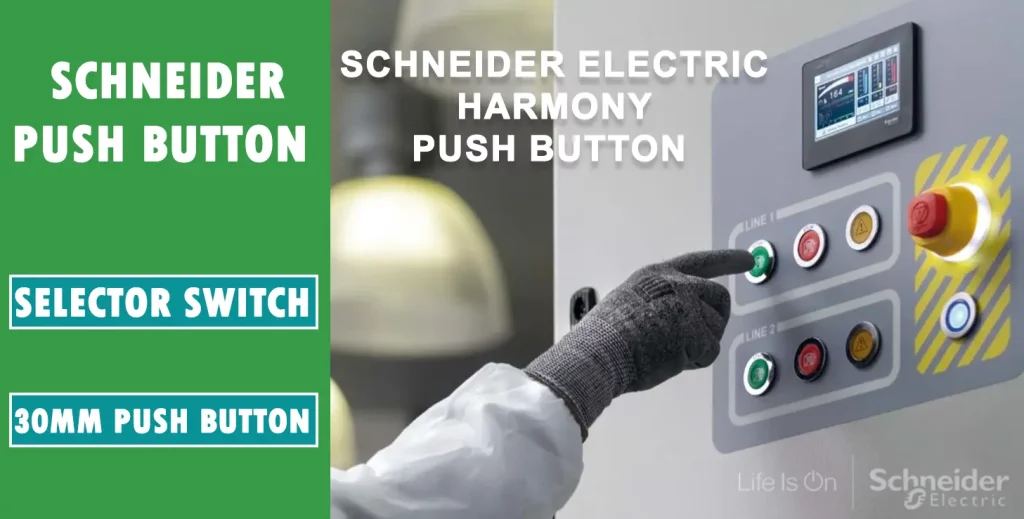
30mm Selector Switch
Schneider Electric 30mm Selector Switches are robust and versatile components used for manual control of electrical circuits. These selector switches are part of the Harmony 9001K and 9001SK series, known for their durability, ease of use, and reliable performance.
Key Features:
- 1.Durable Construction: Built with high-quality materials to withstand harsh industrial environments.
- 2.Versatile Designs: Available in multiple configurations, including two-position, three-position, and maintained or momentary actions.
- 3.Easy Installation: Designed for quick and easy panel mounting with standardized 30mm cut-outs.
- 4.User-Friendly Operation: Clear labeling and ergonomic design make them easy to operate.
- 5.Compliance with Standards: Meets international standards such as IEC, UL, and CSA for safety and performance.
Popular Models:
Harmony 9001K Series: Heavy-duty selector switches designed for industrial control applications. Features include metal or plastic construction, various handle styles (lever, knob), and different contact configurations.
Harmony 9001SK Series: Compact and modular selector switches suitable for both industrial and commercial applications. Offers flexibility with modular components for easy customization.
Technical Specifications:
- Operating Voltage: Typically compatible with 24V to 240V AC/DC systems.
- Contact Configuration: Available in NO (Normally Open), NC (Normally Closed), and various combinations.
- Environmental Ratings: Many models offer IP66, NEMA 4X ratings for protection against dust, water, and corrosion.
- Mounting: Standard 30mm panel cut-out, ensuring compatibility with a wide range of enclosures.
Schneider Electric’s 30mm selector switches are designed to provide reliable control solutions in demanding environments. Their robust construction and versatile design make them suitable for a wide range of applications, ensuring operational efficiency and safety.
9001KR9RH13
The Schneider Electric 9001KR9RH13 is a robust and reliable 30mm push button from the Harmony 9001K series, designed for demanding industrial applications and extreme environments. This push-pull operator features a prominent red mushroom cap, offering enhanced visibility and ease of operation.

Key Features:
- Durable Construction: The 9001K push button operator features a metal base, ensuring long-term reliability in heavy-duty industrial settings.
- Push-Pull Operation: This operator has a push-pull mechanism with two maintained positions, making it ideal for emergency stop applications and other critical control functions.
- Contact Configuration: Supplied with 1 Normally Open (NO) and 1 Normally Closed (NC) contact, providing versatile control options.
- Enhanced Visibility: The red mushroom cap ensures the push button is easily distinguishable and accessible, even in complex environments.
- Simple Installation: Equipped with screw clamp terminals, allowing for quick and secure wiring connections. The contact blocks are designed with terminal screws shipped back out to speed up the installation process.
- Wide Range of Functions: Compatible with a broad line of push button operators, including selector switches, key-operated switches, and operators with potentiometers, pilot lights, joystick controllers, wobble stick operators, and multi-function operators.
- High Visibility LEDs: Some operators in the series come with super bright LEDs for increased visibility in low-light conditions.
- Environmental Resistance: Rated IP66 and NEMA 4, providing excellent resistance to heavy-duty, oil-tight, waterproof, and dust-tight conditions without the need for additional boots. The 9001SK operators are also NEMA 4X corrosion resistant.
- Certified Quality: Conforms to international standards, including IEC, UL, CSA, EN, and NOM. CE marked and ABS certified for automatic self-grounding without additional wiring.
The Schneider Electric 9001KR9RH13 push button operator offers exceptional durability and versatility, making it an excellent choice for a wide range of industrial applications. Its robust construction, ease of installation, and reliable performance ensure it meets the demands of harsh industrial environments while providing efficient and safe control.
Frequently Asked Questions
What is a push button used for?
✅When you press a push button, it either makes or breaks an electrical connection, allowing or interrupting the flow of electricity through the circuit. Pushbutton switches are commonly used in a wide range of electronic devices, control panels, and applications where users need to activate or deactivate a function or operation. These switches are essential for ensuring reliable and efficient control in various settings, from industrial machinery to consumer electronics and automation systems.
What is NO and NC in Push Button Switches?
✅ Push button switches can be classified as either normally open (NO) or normally closed (NC). Normally open (NO) switches, also known as "OFF" position switches, complete the circuit when actuated. In contrast, normally closed (NC) switches, or "ON" position switches, break the circuit when actuated. Understanding the difference between NO and NC push button switches is crucial for selecting the right type for your application, whether it's for industrial machinery, control panels, or electronic devices.
What Are the Two Types of Push Button Switches?
✅ Push button switches come in two main types: single-pole and double-pole switches. The single-pole switch is the most common type, featuring a control device with a single input source and a single output source. This basic design makes single-pole switches ideal for a wide range of applications. Double-pole switches, on the other hand, have two input sources and two output sources, offering more complex control capabilities for advanced electrical systems.
Is a Push Button a Sensor?
✅No, a push button is not an analog sensor. An analog sensor provides a continuous output signal that varies in proportion to the measured quantity. In contrast, a push button provides a discrete output signal that changes state from one level to another when the button is pressed or released. This distinction makes push buttons ideal for applications requiring simple on/off control, unlike analog sensors that are used for more complex, variable measurements.
What is Inside a Push Button?
✅ A push button consists of several key components:
1. Button Actuator: This is the part you physically press. It is connected to an internal mechanism within the switch.
2. Contacts: Push button switches contain one or more sets of contacts, typically made from conductive materials like metal. In their default state, these contacts are separated.
When the button actuator is pressed, it moves the contacts together to complete an electrical circuit. This simple yet effective design is what makes push buttons reliable for various applications, from industrial machinery to everyday electronic devices.
Is a Push Button Digital or Analog?
✅A push button is a digital sensor. Unlike analog sensors, which provide a continuous range of values, digital sensors like push buttons have only two states: on or off. For example, when you press a push button, it changes from off to on, providing a discrete signal. Similarly, a digital light sensor can detect whether it is dark or bright, also giving a binary output. This clear distinction makes push buttons ideal for simple, straightforward control in various applications.



















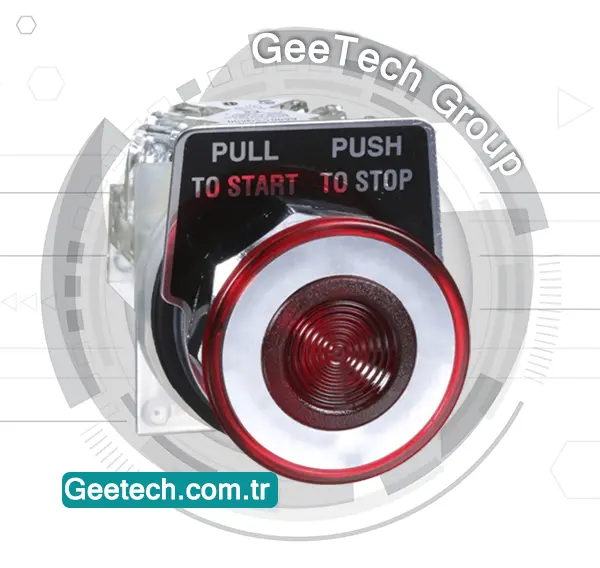

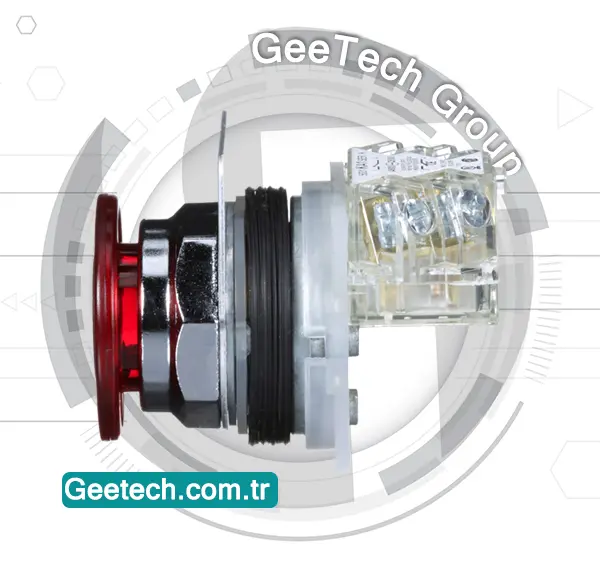
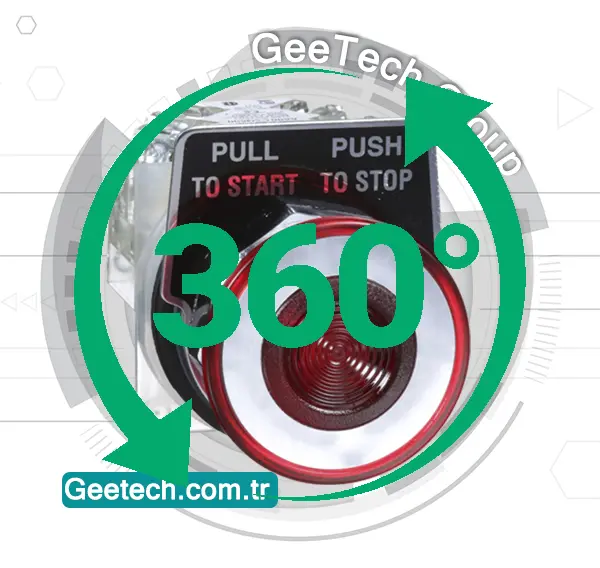




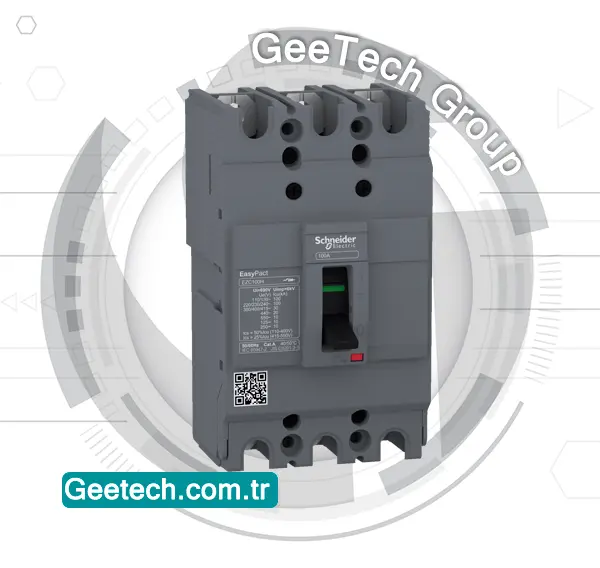

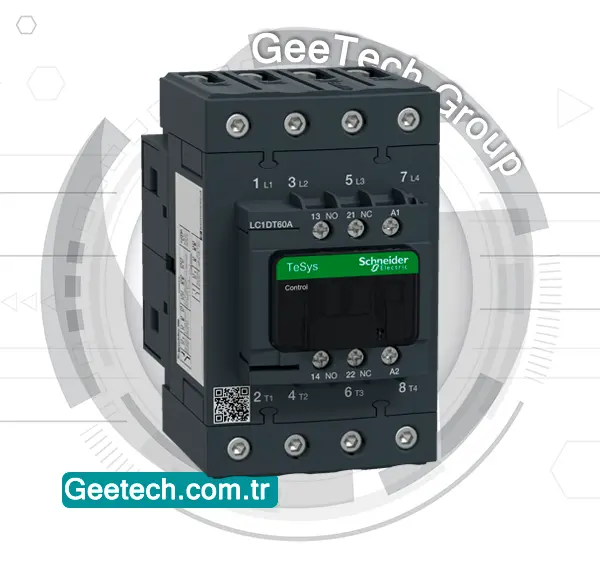
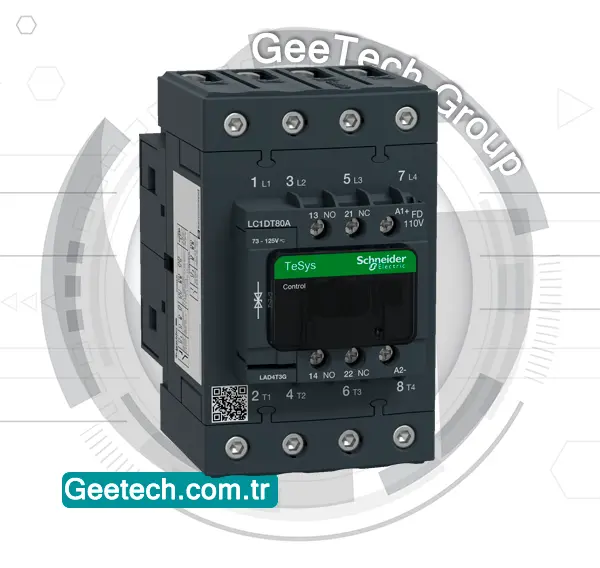

Reviews
There are no reviews yet.